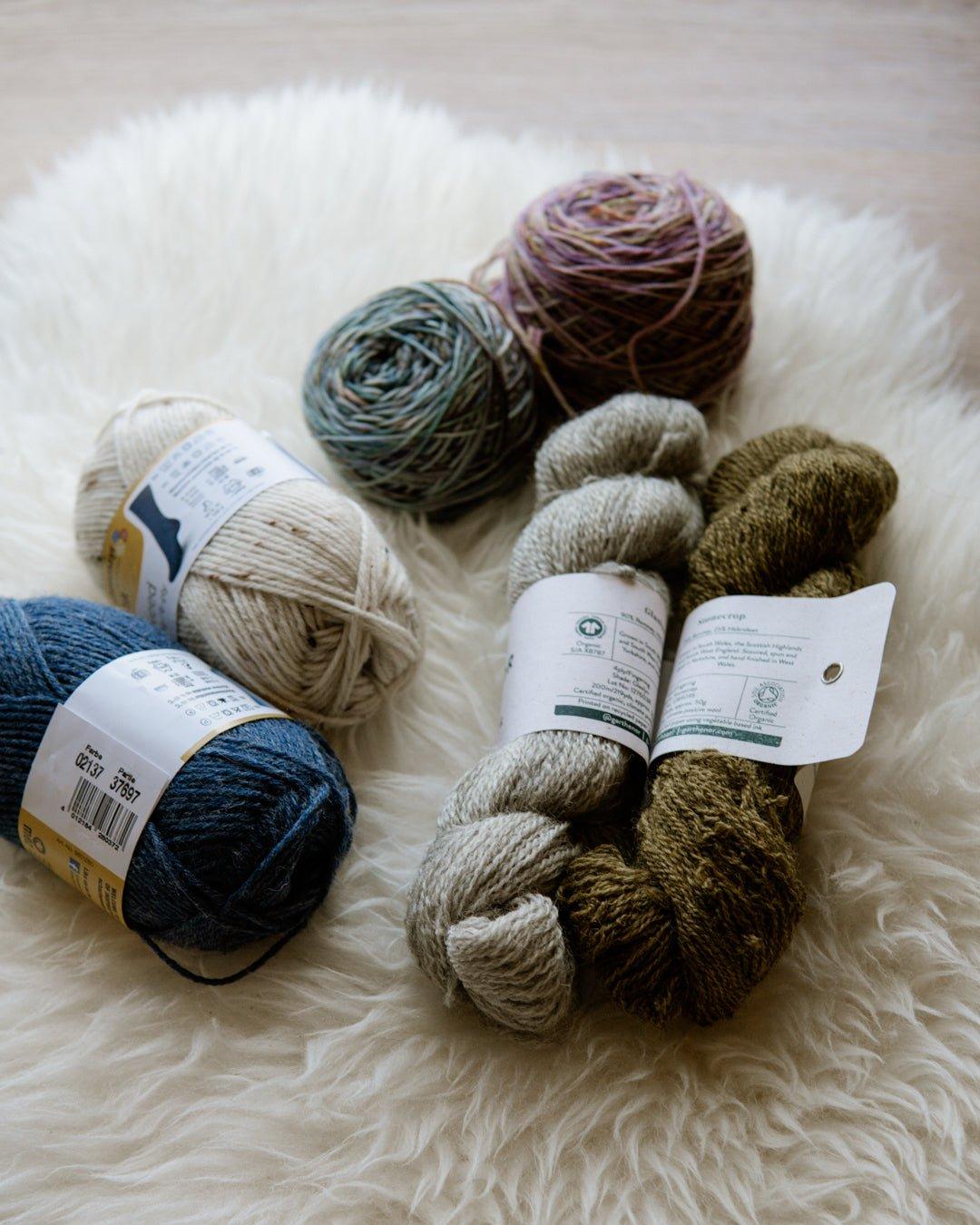6 ways to measure environmental impact by fiber.
Disclaimer: If you're new here, don't forget to read the previous posts in this series for context. We don't do yarn snobbery here so please do not take any information from my work to go and be a rude jerk to other people. Everyone here is a beloved member of this community and this work is for those who are able to financially, medically, and mentally have the space to try to make these choices in a more targeted way.
Last time, I wrote about how the relative sustainability of a knitted project cannot be calculated just based on the production of the yarn. I wrote many words there about how in my opinion, lifetime use assessment far outweighs any production costs to the planet for each item.
The problem of course, is that we are just producing far too much textile in the world right now. The average American buys 64 clothing items and 7 accessories per year. And at the speed that we are making clothes as a planet. There’s enough textile on this planet right this moment to clothe the entire planet for centuries.
So before we go on, please read the previous article and know that today I’m taking a more narrow focus but this is not the whole picture. The real solution to sustainability is to buy and make less textile. The fiber and textile industry is one of the top 10 pollutants in the world, and by making more mindfully and making less, and buying less ready to wear fast fashion, you are already making an impact.
That said, today’s piece is a much more narrow focus and we’ll be focusing on various ways to measure sustainability from a production-only standpoint. It'll also have a focus on impact on humans and the environment because as I said in my last post, environmental justice is a racial justice movement and we cannot leave out the people, or frankly the animals, from the whole picture of how we look at sustainability.
For the purposes of this post, if I write “wool” without any other qualifiers, I’m talking about non-superwash wool.
1. Energy Use From Planting to Manufacturing
This measures the total energy use from the planting stage all the way until the fiber has become a yarn ready for weaving. Generally speaking, plant fibers have the advantage here, over animal fiber, and then both of those are better over manufactured synthetics.
Knitting fibers in order of energy use, from best to worst, according to one study. Please note that generally speaking, flax/linen is even more advantageous here than any of these, but this study did not include it in their list:
- Cotton
- Wool
- Viscose
- Polypropylene
- Polyester
- Acrylic
- Nylon
2. Carbon Sequestering
Plant-based fibers such as cotton, bamboo (seen in rayon and viscose), and flax all sequester carbon by capturing them from the air for photosynthesis. This is a positive impact on the environment as it removes carbon from our environment and turns it into oxygen.
3. Human Cost
Where is the fiber being produced? Who is farming the land? Who is operating the machinery required to make the fiber?
Over 20% of the world’s cotton supply comes from the Uyghur region, where the Chinese government is systematically committing ethnic cleansing, or genocide in other words. The farming, the production, every aspect of cotton produced in this region is done with slave labor from these camps.
To speak about another fiber… what about the superwash process for wool? Are employees properly compensated and protected during the chlorine gas treatment of the fiber?
4. Animal Cost
Most of you probably know about mulesing, a cruel and horrible practice that really should be banned. When you purchase wool, you might want to consider buying from companies that label them mulesing-free specifically.
There are also certifications that guarantee certain conditions, but they don’t prevent harmful and painful practices such as tail docking or even dictate that pain relief be given to the sheep while tail docking is performed. These standards include the Responsible Wool Standard and ZQ Merino.
Look out for further standards also such as Responsible Mohair Standard and cruelty free silk (silk collected from cocoons after the chrysalises have left, rather than killing the silk worms to extract the cocoons).
5. Chemical and Water Use During Growth + Farmland Use
To produce raw fiber, natural fibers from organic living things such as sheep, alpaca, cotton plants, and flax plants all use water and organic or chemical forms of pesticide. Cotton, for example, is a very thirsty crop and is not always produced in a way that is sustainable for the environment due to heavy pesticide run-offs.
There are certifications for production of plant fiber, such as GOTS Certifications, that ensure that more organic farming is used. While there are obvious benefits such as better health for the farmers, and less run-offs of chemicals used in production, the yield for organic cotton is very small compared to non-organic farming. And thus, it takes more acres to grow the same amount of cotton. Often times, natural habitats are displaced to grow crops like cotton, so this is an environmental concern too.
Wool is not really exempt for this conversation too. As a rule of thumb, if a fiber comes from an animal, it requires far more land to grow it than for the same amount of cotton, due to the amount of grazing and supplementary feed farming required. A study comparing wool and cotton in Australia shows that wool requires 367 times more land cleared to grow than the same amount of cotton in Australia.
Fibers like bamboo sound really good, because they are a grass that grows really fast without much care or fertilizer. They also require very little water. But they have a significant impact in production that pretty much cancels out the cultivation benefits.
Probably the most sustainable fiber for this category is flax, or linen.
6. Water Use During Production
Water use in production is a big problem, and a fiber which might have benefits such as carbon sequestering and low energy use in production, such as cotton, will have significant water use in its production process, as well as produce a ton of water waste. This offsets a lot of the benefit of a fiber like this.
The dyeing process also uses loads of water, so that may be something you want to consider as well. Is the producer a low-water-use producer? Do they reuse water or dispose of it in a safe manner?
Conclusion
Obviously, this is not an exhaustive list of the ways we can measure sustainability. But I hope it gives you a starting point to start thinking about your making differently. The reason this post doesn’t have any best-to-worst lists is because this is a complex topic with a million different ways to measure ‘sustainability.’ On many sustainability best-of lists, the fiber linen will top the list, but it’s not as practical a fiber for colder climates and wool might still be a better fiber for your projects. You can see why there's no real easy answers here.
My hope here is to give you a starting point to look into fibers that are right for your project and for your climate. This calculation is not going to be the same from person to person, or from region to region. But we all start to ask more questions about the way we are making and how it's impacting the environment.
If you found this post helpful, you can support me in this work by joining my monthly subscription or donate one time at my Ko-fi page:




Leave a comment
This site is protected by reCAPTCHA and the Google Privacy Policy and Terms of Service apply.